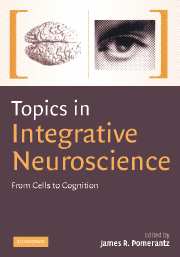Book contents
- Frontmatter
- Contents
- List of contributors
- Preface
- Overview of neuroscience, choice and responsibility
- 1 Neuroscience, choice and responsibility
- PART I HIGHER ORDER PERCEPTION
- Overview of higher order visual perception
- 2 Attention as an organ system
- 3 Cortical dynamics and visual perception
- 4 Cortical mechanisms of visuospatial attention in humans and monkeys
- PART II LANGUAGE
- PART III MEMORY SYSTEMS
- PART IV SENSORY PROCESSES
- Index
- Plate section
- References
Overview of higher order visual perception
Published online by Cambridge University Press: 08 August 2009
- Frontmatter
- Contents
- List of contributors
- Preface
- Overview of neuroscience, choice and responsibility
- 1 Neuroscience, choice and responsibility
- PART I HIGHER ORDER PERCEPTION
- Overview of higher order visual perception
- 2 Attention as an organ system
- 3 Cortical dynamics and visual perception
- 4 Cortical mechanisms of visuospatial attention in humans and monkeys
- PART II LANGUAGE
- PART III MEMORY SYSTEMS
- PART IV SENSORY PROCESSES
- Index
- Plate section
- References
Summary
The three chapters that follow this introduction all deal with aspects of visual perception related to the processing of scenes and the recognition of objects. There was a time when it was clear that higher order visual perception meant processing that took place in brain areas beyond the primary visual cortex. The primary visual cortex was thought to perform simple computations, each covering a small separate part of the visual world (receptive field) and hard wired in the sense that little could be done by learning or attention to modify them. This view stressed hierarchical processing among visual areas, particularly those from primary visual cortex V1 to the anterior temporal areas. Evidence for the hierarchical view is thoroughly summarized in the chapter by Kastner, De Weerd, and Ungerleider. However, all the three chapters deal in rather different ways with qualification to the hierarchical view of visual areas driven passively from the bottom up, based upon the influence of context, attention, and task demands.
In his chapter, Charles Gilbert describes the research work of his group, which has changed the view of how the primary visual cortex works. The older view gave rise to the hope that studies of primary visual cortex might provide the basic immutable building blocks from which it might be possible to launch an analysis of the remaining functions grouped under the title of higher perception.
- Type
- Chapter
- Information
- Topics in Integrative NeuroscienceFrom Cells to Cognition, pp. 25 - 30Publisher: Cambridge University PressPrint publication year: 2008

